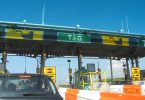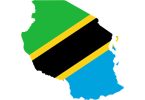The Kuelap fortress is to become the second largest destination in Peru for tourists after the Inca citadel of Machu Picchu,according to Foreign Trade and Tourism regional director Manuel Cabanas.
The fortress of Kuelap or Cuélap , associated with the Chachapoyas culture, consists of massive exterior stone walls containing more than four hundred buildings. The structure, situated on a ridge overlooking the Utcubamba Valley in northern Peru, is roughly 600 meters in length and 110 meters in width. It could have been built to defend against the Huari or other hostile peoples. However, evidence of these hostile groups at the site is minimal. Radiocarbon dating samples show that construction of the structures started in the 6th century AD and occupied until the Early Colonial period (1532-1570). However, through the pre-Columbian, conquest and colonial periods we have only four brief references to Kuelap. In lieu of newly discovered documents, there exists no other testimony concerning the site until 1843.
Cabanas said that the northern Amazon region, home of the famous archaeological site, has several other natural wonders that currently “we do not know their full potential because of the lack of air connectivity and proper highways.”
A cable car system which will link the district of Lingo with the Kuelap fortress is on track with the aim of doubling the number of visitors.
This cable car system will provide a fast and modern access route to Kuelap Fortress with a 4,400-metre route that will overcome the distance of 965 metres between Tingo lolality and Kuelap.
Kuelap, one of the largest ancient monuments of the Americas, was a fortified citadel in northern Peru on the slopes of the Andes. The remains of the settlement sit 3,000 metres above sea level and the original fortress covered 25,000 square miles.
The fortress was the political centre of the Chachapoya civilisation, a pre-Colombian culture that flourished from about 900 to 1,400 AD.
The region is on track to be the second most known tourism destination within Peru.






















